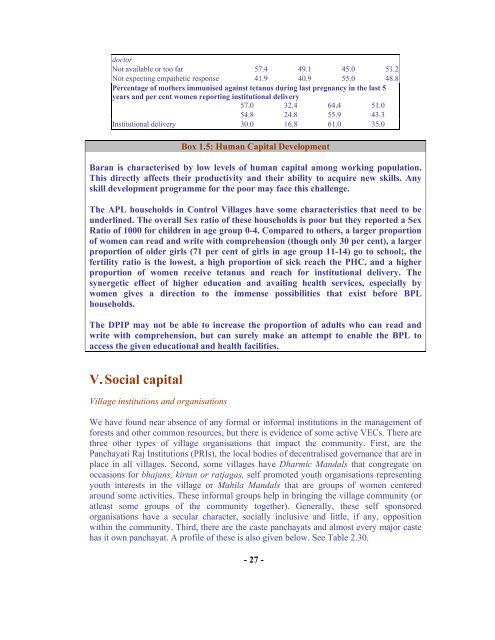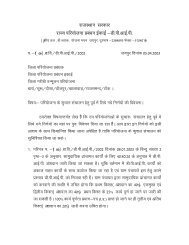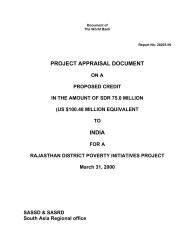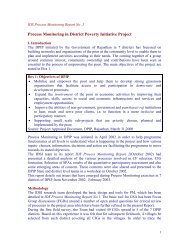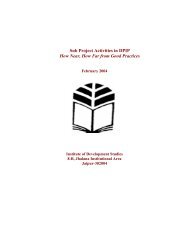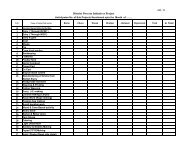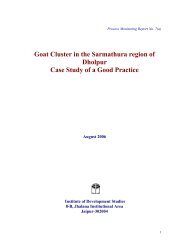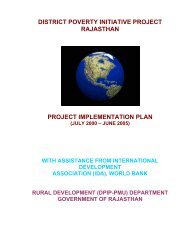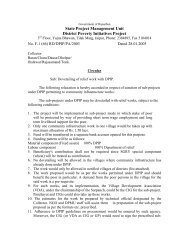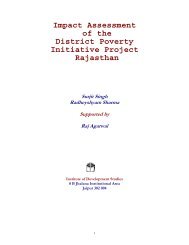Download PDF - Rajasthan Rural Livelihoods Project
Download PDF - Rajasthan Rural Livelihoods Project
Download PDF - Rajasthan Rural Livelihoods Project
Create successful ePaper yourself
Turn your PDF publications into a flip-book with our unique Google optimized e-Paper software.
doctorNot available or too far 57.4 49.1 45.0 51.2Not expecting empathetic response 41.9 40.9 55.0 48.8Percentage of mothers immunised against tetanus during last pregnancy in the last 5years and per cent women reporting institutional delivery57.0 32.4 64.4 51.054.8 24.8 55.9 43.3Institutional delivery 30.0 16.8 61.0 35.0Box 1.5: Human Capital DevelopmentBaran is characterised by low levels of human capital among working population.This directly affects their productivity and their ability to acquire new skills. Anyskill development programme for the poor may face this challenge.The APL households in Control Villages have some characteristics that need to beunderlined. The overall Sex ratio of these households is poor but they reported a SexRatio of 1000 for children in age group 0-4. Compared to others, a larger proportionof women can read and write with comprehension (though only 30 per cent), a largerproportion of older girls (71 per cent of girls in age group 11-14) go to school;, thefertility ratio is the lowest, a high proportion of sick reach the PHC, and a higherproportion of women receive tetanus and reach for institutional delivery. Thesynergetic effect of higher education and availing health services, especially bywomen gives a direction to the immense possibilities that exist before BPLhouseholds.The DPIP may not be able to increase the proportion of adults who can read andwrite with comprehension, but can surely make an attempt to enable the BPL toaccess the given educational and health facilities.V. Social capitalVillage institutions and organisationsWe have found near absence of any formal or informal institutions in the management offorests and other common resources, but there is evidence of some active VECs. There arethree other types of village organisations that impact the community. First, are thePanchayati Raj Institutions (PRIs), the local bodies of decentralised governance that are inplace in all villages. Second, some villages have Dharmic Mandals that congregate onoccasions for bhajans, kirtan or ratjagas, self promoted youth organisations representingyouth interests in the village or Mahila Mandals that are groups of women centeredaround some activities. These informal groups help in bringing the village community (oratleast some groups of the community together). Generally, these self sponsoredorganisations have a secular character, socially inclusive and little, if any, oppositionwithin the community. Third, there are the caste panchayats and almost every major castehas it own panchayat. A profile of these is also given below. See Table 2.30.- 27 -


